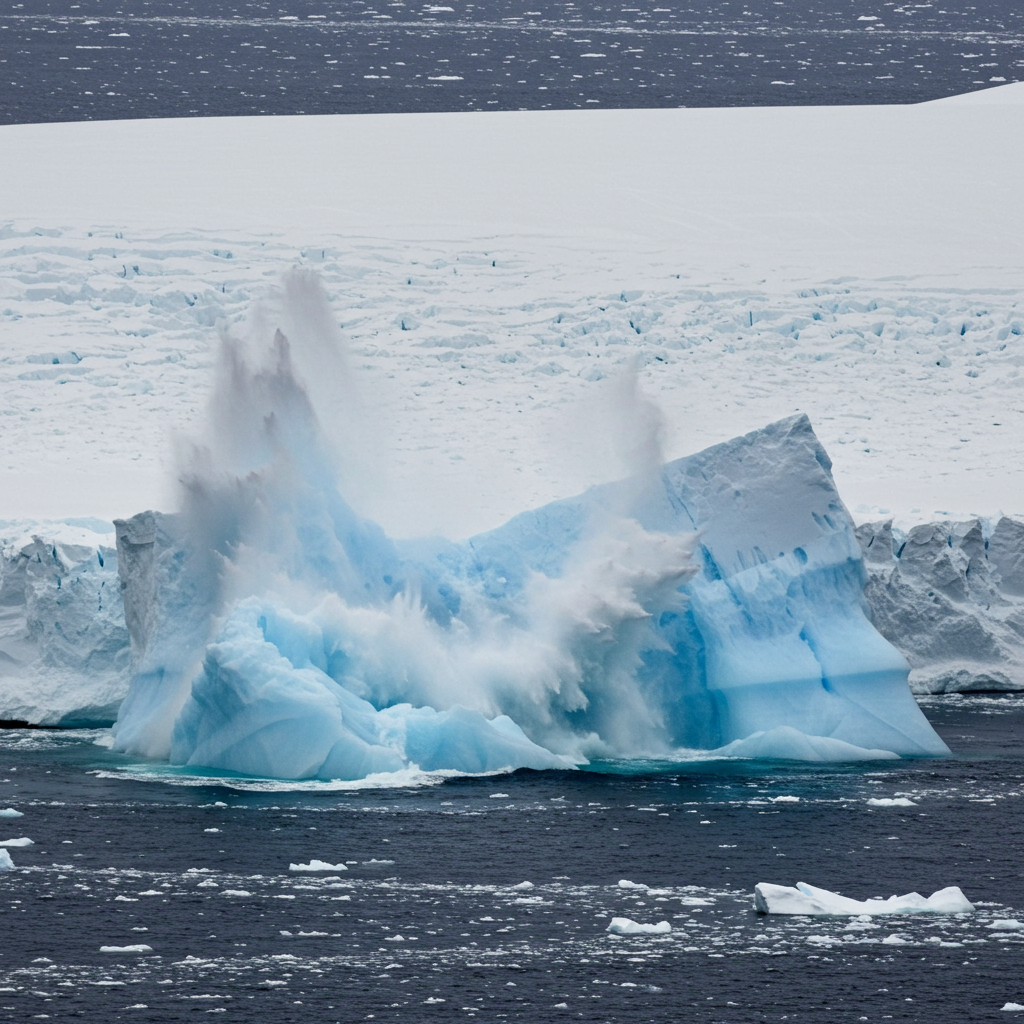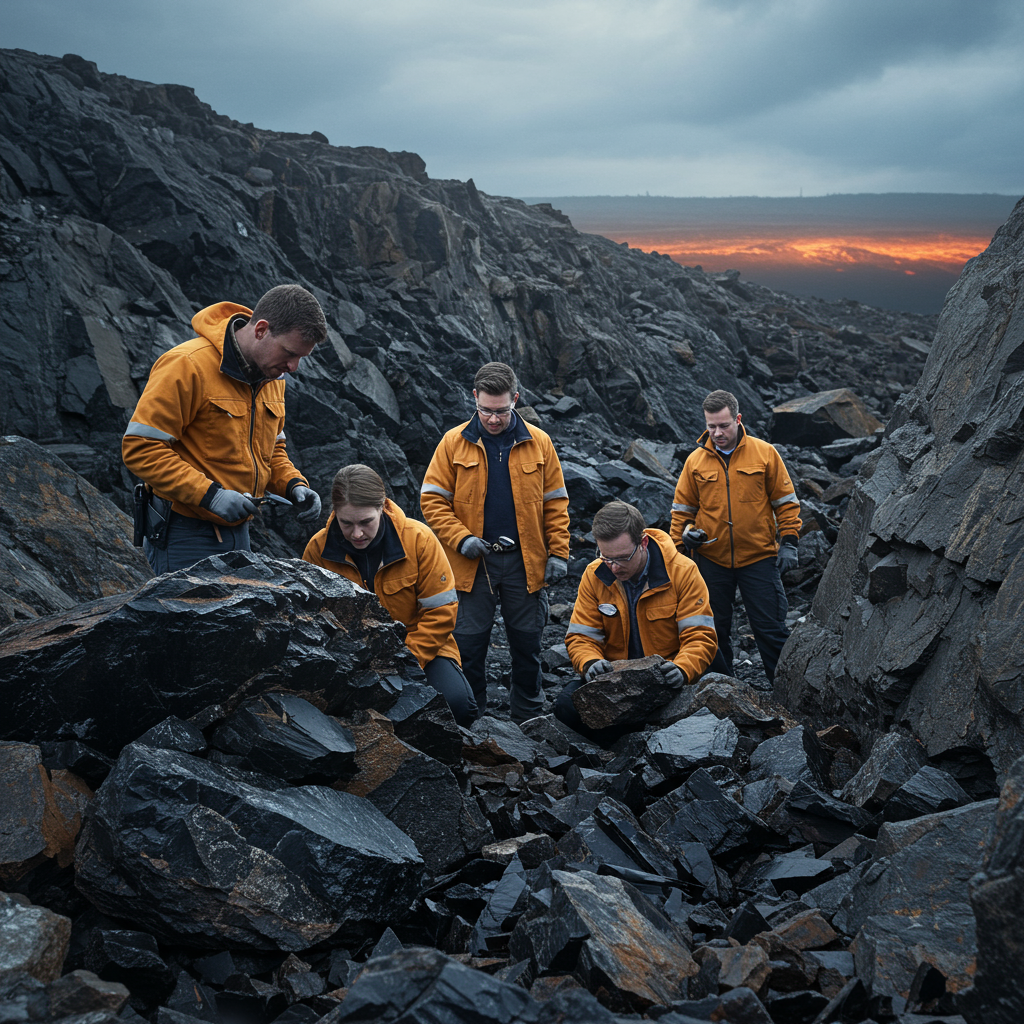Understanding why massive chunks of ice shelves suddenly break away, known as calving, is vital for predicting future sea-level rise. Antarctic ice shelves act like crucial brakes, slowing the flow of ice from the continent’s vast ice sheet into the ocean. When these shelves weaken or collapse, they lose their ability to buttress the ice sheet. This allows more land ice to pour into the sea, directly contributing to rising global sea levels.
Over recent decades, scientists have observed alarming large-scale calving events. These events have sometimes removed significant portions of ice shelves in just days or weeks. While some collapses are linked to warmer temperatures causing melt, others appear connected to changes in the ocean environment, particularly the loss of protective sea ice. A key question has been exactly how sea ice loss might precondition ice shelves for these dramatic collapses.
The Unseen Stress: How Ocean Swell Weakens Ice Shelves
Scientists have long suspected that ocean swell plays a role in ice shelf stability. Swell waves, generated by distant storms, can travel vast distances across the open ocean. When these waves reach the edge of an ice shelf, they cause the ice to flex or bend repeatedly. This constant bending motion creates stress within the ice. Over time, this flexural stress can cause existing fractures to grow. It can also initiate new cracks, especially near the vulnerable shelf front.
However, the open ocean environment isn’t always present at the ice shelf edge. Sea ice acts as a natural buffer against incoming swell. Both thick, multi-year pack ice and, critically, the fast ice frozen directly to the coastline or ice shelf front, can absorb or block ocean waves. This protective barrier prevents or significantly reduces the amount of swell energy reaching the ice shelf. Without this sea ice barrier, ice shelves become directly exposed to the full force of ocean waves.
Tracking the Link: Flexure, Sea Ice, and Calving
A recent study published in Nature Geoscience delved deep into the connection between sea ice loss, amplified flexure, and large-scale calving events. Researchers analyzed seven years of satellite data (2002–2009) covering the Wilkins and Voyeykov ice shelves in Antarctica. Both of these shelves experienced major calving events during this period – Voyeykov in 2007 and Wilkins in 2008.
The study tracked changes in the length of both pack ice and fast ice barriers in front of these shelves. Simultaneously, using models, they estimated the flexural stress imposed on the shelf fronts by incoming ocean swell. The goal was to see if there were observable patterns in sea ice conditions and ice shelf stress leading up to the calving events.
Prolonged Flexure Preconditions Ice Shelves
The findings were striking. The study revealed a clear preconditioning pattern common to both the Wilkins and Voyeykov ice shelves before their large calving events. This pattern was characterized by prolonged periods where the ice shelves experienced significantly amplified flexure. This increased bending stress was directly linked to a substantial reduction, and eventual collapse, of the protective sea ice barriers.
The analysis showed that in the year of, and even the year preceding, the calving events, there were many more days with low sea ice coverage. This lack of sea ice allowed ocean swell to reach the ice shelf fronts with greater intensity. The resulting flexural stress was estimated to be significant, comparable in magnitude to the internal stress levels within the ice shelf itself. This sustained, amplified stress appears to fatigue and weaken the ice.
The Role of Fast Ice: Antarctica’s Last Stand
The research highlighted the critical importance of fast ice. Fast ice, frozen firmly in place, provides a more stable and effective barrier against swell than mobile pack ice. The study observed that the collapse of this adjoining fast-ice barrier was a key element in the preconditioning process.
For instance, before the Voyeykov calving, both pack ice and annual fast ice retreated rapidly. This was followed by the break-up of perennial fast ice less than a month before the main event. The Wilkins ice shelf fronts also experienced extreme sea-ice loss, including the removal of fast ice, in the months leading up to calving. This left them exposed to damaging swell for extended periods. The protective effect of sea ice was quantified; a 100-kilometer sea ice barrier can offer protection against swell equivalent to adding 50-100 meters of ice thickness to the shelf. This is a massive effect, especially for thinner ice shelves.
A Conceptual Model Emerges
Based on these observations, the researchers proposed a conceptual model for the sequence of events leading to large-scale calving driven by swell and sea-ice loss. The model outlines stages:
Early Preconditioning (>18 months before): Initial reduction in pack ice and weakening of the shelf front.
Mid-Stage Preconditioning (6 months before): Significant sea-ice loss begins, including potential fast-ice removal, leading to increased exposure and amplified flexure. Accumulated flexural stress starts building fatigue in the ice.
Late Preconditioning (<6 months before): Continued extreme sea-ice loss, collapse of remaining fast ice, and sustained high flexural stress. Anomalously large accumulated stress peaks occur, severely weakening the ice.
Triggering (<1 month before): Final collapse of any remaining protective ice and peak exposure to large swell events, triggering rapid fracture propagation and calving.
While the general pattern involves sea ice loss leading to flexure and weakening, the specific timing and relative importance of pack ice versus fast ice loss can vary. Pre-existing large fractures can also influence how the ice responds.
Beyond Wilkins and Voyeykov
The study tested their conceptual model against other documented large-scale Antarctic calving events. The model appears to fit events involving relatively thin ice shelves with attached fast ice, such as the McMurdo (2016) and Conger–Glenzer (2022) events. These collapses also followed prolonged periods of sea-ice reduction. The model also aligns with events like Parker (2019) and Larsen B (2022), which, despite involving somewhat thicker ice, were also linked to sea-ice loss.
However, the model does not seem to apply to much thicker ice shelves, like Larsen C (2017) or recent events at the Brunt Ice Shelf (2023, 2024). For these thicker shelves, swell-induced flexure has a much smaller impact due to the ice’s rigidity. Their calving events may be driven by different processes. This distinction highlights that the sea-ice-flexure mechanism is particularly critical for understanding the stability of thinner ice shelves, which make up a significant portion of Antarctica’s coastline.
Why This Research Matters Now
Understanding the precise mechanisms driving ice shelf calving is crucial for improving projections of future sea-level rise. This research demonstrates that rapid and widespread Antarctic sea-ice loss is not just an indicator of climate change; it’s likely a direct, crucial factor driving ice shelf instability, especially for thinner shelves susceptible to swell.
The findings are particularly relevant in the context of recent, unprecedented extreme minima in Antarctic sea ice extent observed since 2022. Such dramatic reductions in sea ice could leave many more ice shelves exposed to damaging ocean swell. This increases their vulnerability to the prolonged flexural stress identified as a key preconditioning factor for large calving events. Continued monitoring of both sea ice and ice shelf flexure is essential for anticipating where the next major ice shelf collapse might occur and refining our understanding of Antarctica’s contribution to future sea levels.
Frequently Asked Questions
How does losing sea ice cause Antarctic ice shelves to calve?
Sea ice, especially fast ice frozen near the coast, acts like a buffer against ocean waves (swell). When this sea ice disappears, the swell can reach the ice shelf edge directly. This causes the ice shelf to bend repeatedly, a process called flexure. Prolonged periods of increased flexure stress weaken the ice, causing fractures to grow or form, eventually leading to large sections breaking off (calving).
Which Antarctic ice shelves are most vulnerable to this process?
The study suggests that thinner ice shelves are most vulnerable to calving triggered by sea-ice loss and amplified flexure. This is because thinner ice is more susceptible to bending and fracturing under swell stress compared to very thick ice shelves. Examples studied include Wilkins and Voyeykov, and the model also fits events at McMurdo and Conger–Glenzer ice shelves.
Why is understanding this link important for future sea level predictions?
Ice shelves buttress or hold back the flow of ice from the Antarctic Ice Sheet into the ocean. When ice shelves collapse, this buttressing effect is reduced, allowing ice from the land sheet to flow faster into the sea, which directly raises global sea levels. By understanding how sea ice loss leads to calving, scientists can improve models that predict how much ice Antarctica might lose in the future, leading to more accurate sea level rise projections.
Conclusion
The stability of Antarctic ice shelves is intricately linked to the presence of protective sea ice. New research highlights that the loss of sea ice barriers allows ocean swell to induce prolonged, amplified flexural stress within ice shelves. This sustained bending and stress acts as a critical preconditioning mechanism, fatally weakening the ice and ultimately triggering large-scale calving events. This process, particularly relevant for thinner ice shelves, underscores the urgent need to monitor Antarctica’s rapidly changing sea ice environment as a key indicator for future ice shelf stability and its subsequent impact on global sea levels.




